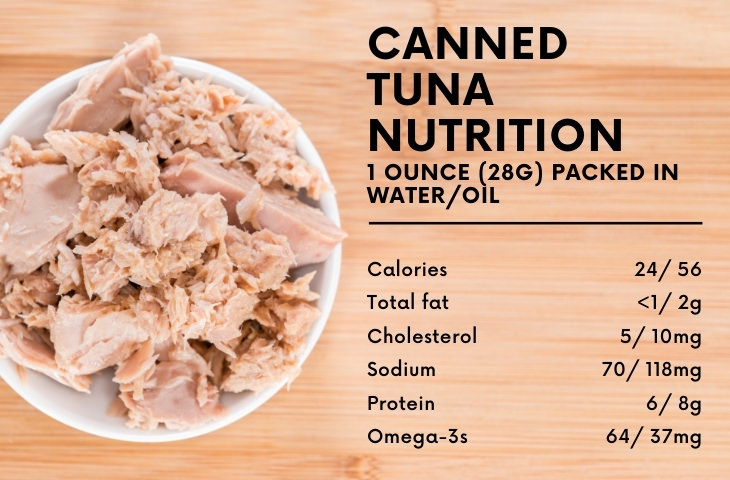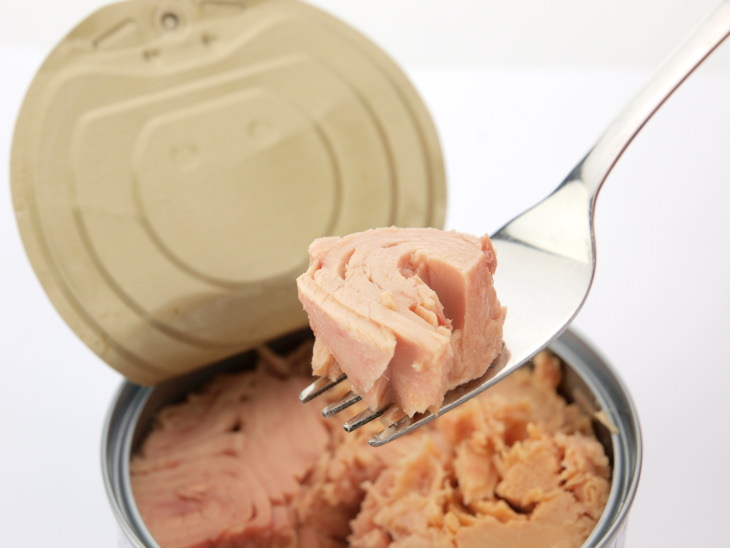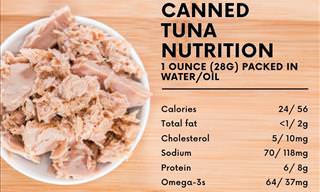Canned tuna is probably the easiest way you can purchase fish. It doesn’t spoil fast and can be stored in the pantry for years, and it’s also a versatile ingredient that can be added into anything starting from sandwiches to salads, casseroles, and pasta. Apart from that, canned tuna is a great source of protein and other beneficial nutrients. Therefore, it’s easy to see why canned tuna is so popular, but nutritionists and doctors point out that there are also certain drawbacks of eating tuna. Learn all about the nutrition and facts, benefits, and potential downsides of eating canned tuna in the article below.
The Benefits of Canned Tuna
First of all, it’s important to note that not all canned tuna is made equal, and its nutrient content will depend on the brand of the tuna, as well as the liquid in which it’s preserved. Generally, tuna preserved in oil is higher in fat content and calories, sodium, and cholesterol, whereas tuna preserved in water will be higher in omega 3 fatty acids, especial a kind of omega 3 called docosahexaenoic acid (DHA), which is especially important for eye and brain health.

Therefore, for most people, canned tuna packed in water is a better choice. Above, you can see a chart comparing the nutrition content of tuna preserved in water (the figures to the left) and that preserved in oil (the numbers to the right). Overall, canned tuna is an excellent, low-fat source of protein, which means that’s it’s especially beneficial for those who are in the process of losing weight. Studies also showed that tuna can increase the feeling of fullness and reduce food cravings, which makes it an excellent protein source for losing weight.
In addition, canned tuna is packed with omega-3 fats that are essential for protecting the heart, eye, and brain from cancer and other diseases. Omega-3s are considered the healthiest fats, and this is why the Dietary Guidelines for Americans state that adults should eat 227 g (8 oz) of seafood every week. Finally, several essential nutrients, such as vitamin D, iodine, and selenium are present in canned tuna.
The Potential Drawbacks of Canned Tuna
All in all, tuna is an excellent food choice for most people, but it’s not perfect, and there are also some potential downsides to it. Some of these downsides can be mitigated by choosing the right kind of tuna, but others are a universal issue. Probably the biggest problem is the mercury content in tuna. Mercury is a heavy metal, and it is present in seafood as a result of water contamination.
 Large predatory fish species who eat smaller fish, such as salmon, tuna, and tilapia tend to be more heavily contaminated with mercury than small fish because the heavy metal tends to accumulate in their bodies when they eat smaller fish. The general rule is: the larger the fish, the higher they tend to be in mercury. Therefore, large tuna varieties of tuna, such as albacore and bigeye are more concerning than smaller ones, e.g. skipjack and light tuna.
Large predatory fish species who eat smaller fish, such as salmon, tuna, and tilapia tend to be more heavily contaminated with mercury than small fish because the heavy metal tends to accumulate in their bodies when they eat smaller fish. The general rule is: the larger the fish, the higher they tend to be in mercury. Therefore, large tuna varieties of tuna, such as albacore and bigeye are more concerning than smaller ones, e.g. skipjack and light tuna. Humans, too, accumulate mercury in their bodies, and when it reaches toxic levels, serious health problems can occur, especially symptoms related to the central nervous system, such as numbness in the extremities, anxiety, depression, memory problems, and tremors. High mercury levels may also affect a child’s neural development, which is why pregnant and breastfeeding mothers, as well as kids younger than 2 years old, are recommended to avoid fish. So, how much canned tuna is considered too much?
According to studies, people who eat fish high in mercury once a week or more have elevated mercury blood levels and can experience fatigue. Experts recommend limiting their intake of canned albacore tuna to one weekly serving (113 g or 4 oz), but it’s fine to consume smaller tuna varieties more often. In addition to a high mercury content, canned tuna, like most canned foods, can also be high in sodium, so it’s recommended to opt for low-sodium varieties.
Finally, the tuna cans themselves may be lined with a potentially toxic type of plastic called bisphenol A (BPA), so you should always inspect the can itself and make sure it’s not corroded, has no dents, and is not otherwise damaged.
Share this information with family and friends!
 Go to BabaMail
Go to BabaMail





















































